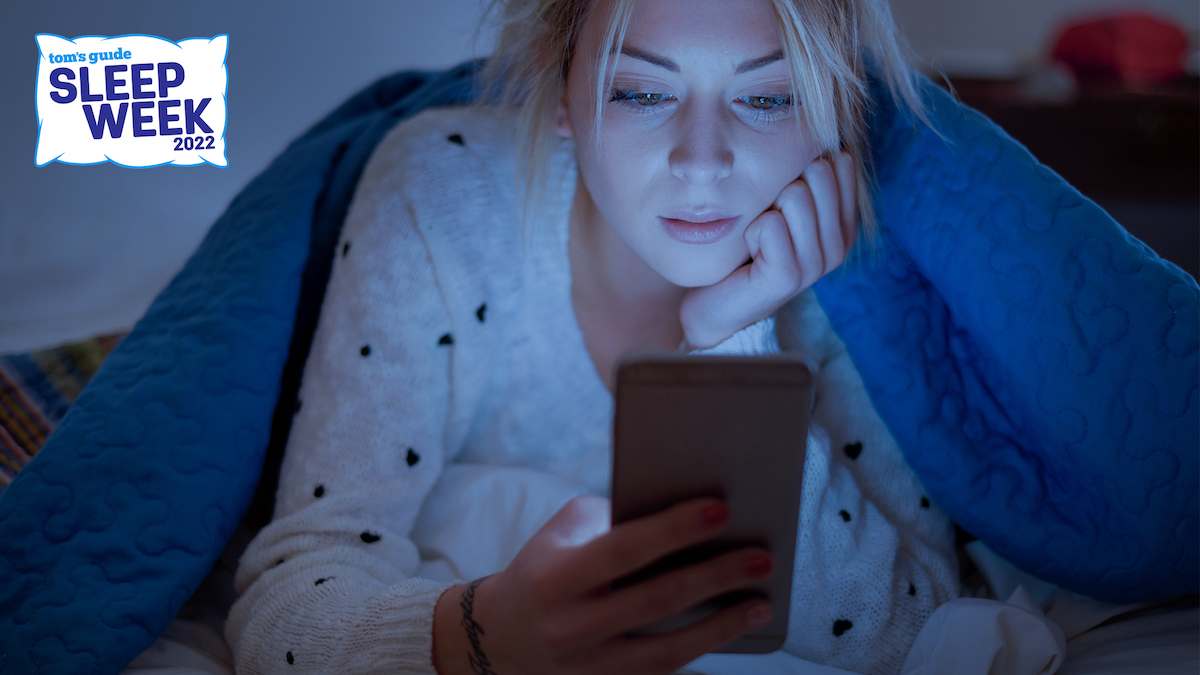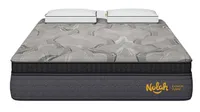I put TikTok’s 5 biggest sleep techniques to the test – here’s what happened
Can squeezing your palm and imagining you’re in a velvet hammock really help you to sleep better? Time to find out...

TikTok is filled with videos about everything from cute pets to current affairs explainers. It’s also a great place for advice, especially sleep advice. But with so many videos and thousands of so-called ‘experts’ on TikTok, how do you know which sleep advice to follow and what’s not worth it?
We put five of the most popular sleep techniques on TikTok to the test to see if they helped us to sleep better. Unfortunately, we don’t have a sleep lab to test these techniques scientifically. But read on to find out which we recommend trying if you want to get to sleep quicker, sleep more soundly and stay asleep longer – and which were a snooze fest for all of the wrong reasons.
And for other ways to boost your chances of a better night's sleep, take a look at our best mattress guide for super-comfy options for all sleep styles.
1. The Military Method
Ease of use (out of 10): 7
Effectiveness (out of 10): 9
How to do it:
According to fitness coach @justin_agustin, calm your body by consciously relaxing each part, from your head to your toes. Imagine a warm sensation as you do this, filling each area. Then, visualise one of two scenarios, either that you’re laid in a canoe in a calm lake. Or, you’re laid in a velvet hammock in a dark room. When you get distracted, say “don’t think, don’t think, don’t think” to yourself for ten seconds.
My experience:
Get instant access to breaking news, the hottest reviews, great deals and helpful tips.
This is allegedly a technique used by those in the military to ensure they can sleep whenever and wherever they are in under two minutes. I’d heard of it before but always found it daunting to remember the different steps.
I found it effective when I had trouble getting to sleep or falling back to sleep during the night. Especially the first part. This reminded me of a meditation technique I already use called ‘body scan’ – but I hadn’t considered it for sleep before. Relaxing each part of my body was extremely calming and, I’d say eight times out of 10, helped me ease into a restful sleep. However, a few times, I found that thinking about the different steps did end up counterproductively making me feel more awake.
The idea is you practice this technique every night for six weeks. I only did it for two, but it became more effective over that time.
2. Hand Acupuncture
Ease of use (out of 10): 7
Effectiveness (out of 10): 8
How to do it:
Acupuncturist @anew.acu suggests you make a loose fist and see where the tip of your little finger (or pinky finger) falls on your palm. She says this is your heart point in Chinese medicine. Rub this point for 30 seconds three times. Do the same again and notice where the tip of your middle finger falls. This is the pericardium point. Rub this point for 30 seconds three times as well.
My experience:
Acupuncturists say this technique stimulates the nerves connected to your heart, calming your mind and easing you into sleep. Did it work for me? Yes. I found that rubbing my hand did make me feel more tired, and I noticed my sleep was restful afterwards.
The problem is, I’ve always found rubbing my hands to be extremely calming. It’s hard to tell, then, if it’s massaging the specific points or generally massaging that worked here – but maybe it doesn’t matter?
The more I used this technique, the more it became an enjoyable part of my bedtime routine (I even added a bit of sleep-promoting lavender oil). And regardless of whether it’s the acupuncture points or the massage that was effective, I’ll continue doing it as I think it improved my sleep and, at the very least, feels nice.
3. Paradoxical Intention
Ease of use (out of 10): 9
Effectiveness (out of 10): 0
How to do it:
This one sounds simple: fall asleep by trying not to sleep. We’ve all been told not to think of a pink elephant then imagined one instantly, right? This is the same thing. Don’t force yourself to sleep. Instead, lie in bed still with your eyes open and tell yourself you’re going to stay awake, no matter what – the idea is you’ll get tired and fall asleep.
My experience:
Unfortunately, this technique didn’t work for me – in fact, it had the opposite effect. I can get on board with the idea that forcing myself to think about falling asleep isn’t helpful, so why not try the opposite, right? But it turns out forcing myself to stay awake isn’t helpful either. I imagine that’s because, even though I wasn’t pushing myself to sleep, I was still forcing myself to think about sleep.
Maybe that’s why the Military Method was effective for me. Because I wasn’t focusing on sleep at all, but something else entirely different, like a canoe on a lazy lake.
From what I can tell, this is subjective. I scrolled through the TikTok comments under this technique and found plenty of people do find it helpful, but it wasn’t for me. Give me hand massages and cosy hammock visualisations any day – or night.
4. 4 7 8 Sleep Method
Ease of use (out of 10): 7
Effectiveness (out of 10): 5
How to do it:
This technique is for those who have a hard time getting to sleep or often wake up during the night. According to @thesleepdoctor on TikTok, it lowers your heart rate and makes you tired. Simply breathe in for a count of 4, hold for a count of 7 and breathe out for a count of 8. Then repeat.
My experience:
Focusing on my breath as a way to fall back to sleep has worked well for me in the past. But sticking to the 4 7 8 method didn’t. Maybe this breathing style generally doesn’t work for me – holding for seven feels like quite a long time – or perhaps the numbers were too tricky to remember. I know what you’re thinking. Three numbers aren’t that hard to remember. But when all you want to do is sleep, thinking about number sequences and second-guessing yourself isn’t ideal.
I prefer box breathing, a similar method when you breathe in for four, hold for four, exhale for four and repeat. It has many of the same benefits, but, at least for me, it’s much easier to remember and, therefore, stick to when I’m lying in bed desperate to get back to sleep.
5. The Animian Point Ear Massage
Ease of use (out of 10): 7
Effectiveness (out of 10): 8
How to do it:
The anmian is a pressure point behind your ear. To find it, put your fingertips behind your earlobe, and slide your finger back to find a ridge and a small notch – it might feel tender. Rub this spot in a circular motion 100 to 200 times. This will, allegedly, help to relax your nervous system, calm you down and make sleep easier.
My experience:
Like the hand massage technique, this one felt good and certainly made me feel calmer before bed. But, similarly, it’s hard to know whether that had anything to do with the anmian point. Was it simply because it involved a night-time ritual and a pleasant sensation on my head instead?
I did find that 100 circular motions felt like a lot, so I stuck to around 80 the first few nights – as the TikToker @doctorhanson says, this spot can get sore – and I did wonder whether I’d even found the right place. Maybe everyone’s head is a bit different, but I don’t seem to have the “notch” Hanson mentions – do you?
I want to think the pressure point made all of the relaxing magic happen here, but it’s hard to know whether simply rubbing my forearm or getting a nice head massage would have had the same effect.
Should you use TikTok for sleep advice?
The sleep techniques we tried above were shared by doctors, fitness coaches and specialists on TikTok. But it’s sometimes tricky to figure out who’s an expert and who isn’t – especially on TikTok, where it’s difficult to judge whether shared advice is safe and reliable.
If you have concerns about a tip, try Googling it first to see what others have to say about it and whether the person sharing it has the expertise they claim to have.
If you have more serious worries about your sleep or lack of it, book an appointment with your doctor. Sleep techniques might help some people, but medical professionals always know best.
Save up to $750 on mattresses at Nolah Sleep
We’ve teamed up with Nolah to offer you an exclusive discount of up to $750 off memory foam and hybrid mattresses (with code TGNOLAH). Each model is made with cutting-edge mattress tech to help you sleep cooler and to relieve pressure on your back and hips. You’ll get free shipping and a 120-night trial too.
This article is part of Tom’s Guide’s Sleep Awareness Week 2022 celebration, running until Saturday 19 March. Stay tuned for plenty of sleep tips, advice and expert-rated products to help you sleep better this year.
Becca has written about homes, lifestyle and tech for brands such as TechRadar, T3, The Guardian and many more. Her first book, Screen Time, came out in January 2021 with Bonnier Books, within which she also explores how screen use affects sleep. For Tom's Guide Becca writes about sleep health and techniques, with the aim of helping readers to sleep better each night.


